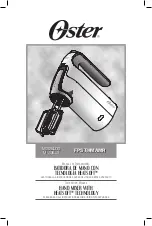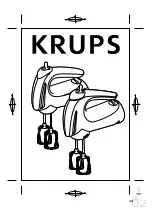
3
6
5. Regolazione dei toni: Ciascun canale è dotato di controlli di
tono (4) indipendente in grado di attenuare o esaltare le note
alte (Hi), medie (Mid) e basse (Low) consentendovi
l’eliminazione di fruscii o di note troppo acute. Agendo sulle
relative manopole potrete ottenere la gradevolezza audio
desiderata. Va rammentato che questi comandi non
aumentano la fedeltà audio ma solo la gradevolezza.
Normalmente vanno lasciati in posizione centrale, per la totale
esclusione dell’effetto.
6. CrossFader: Spostando a destra o a sinistra il comando
lineare “CROSS FADER”(9) si otterrà un effetto di evanescenza
ambientale fra i canali audio CH2 e CH3. Normalmente il
comando “CROSS FADER”(22) va lasciato in posizione
centrale.
7. Comando MASTER: E’ la regolazione che controlla l’uscita
del mixer. Tutti i segnali miscelati si combinano in un unico
segnale d’uscita il cui livello sarà opportunamente regolato
dal comando “MASTER”(10) prima di venir immesso nel
Vostro amplificatore o registratore. La regolazione
“MASTER”(17) agisce contemporaneamente su entrambe i
canali stereo , che possono tuttavia allinearsi agendo sul
comando “BALANCE” (16).Il livello d’uscita è misurabile con
precisione attraverso i VU-METERS (11) a leds luminosi,che
verrà attivato dal pulsante (11). Analoga funzione del “MASTER”
(17) ha il comando “BOOTH” (15) che regola il volume del
segnale destinato ad un secondo amplificatore presente alle
prese posteriori (25).
8. BALANCE: E’ il comando (16) che permette di rendere
euguali le potenze dei canali destro e sinistro ancorchè agli
ingressi esse arrivino con livelli diversi.
9. PREASCOLTO (CUE): Collegando una cuffia alla presa
“PHONE”(20),potrete controllare il segnale del canale 1,2 o 3,
a seconda della scelta che imposterete agendo sui
commutatori “PFL”(6). Il comando rotante “VOLUME” (18)
permette di regolare in cuffia i segnali provenienti dal preascolto
(CUE) . In luogo della cuffia, alla presa “PHONE”(20) potranno
collegarsi altri strumenti di misura quali oscillografi,
spettrografi etc.
10. CONTROLLO DíALLINEAMENTO DELLE BATTUTE.
I Leds luminosi (8) vi indicheranno se il ritmo dei “ beats” (
battute di tamburo) è in accordo fra il canale 1 ed il canale3,
mentre il visore (display) (21) Vi fornirà la lettura digitale dei
“BPM” ( beats per minuto ) per gli stessi canali.
Se i Leds (8) mostrano luce rossa il ritmo non è in accordo;
se mostrano luce gialla ilritmo è quasi in accordo, mentre la
luce verde indica un perfetto accordo ritmico, tuttavia se i BPM
dei canali differiscono di oltre 11, i Leds (8) non daranno
indicazione colorata.
be connected a CD or a VCR or any other similar instru-
ments. Acting on “LINE/PHONO”(6) you will choose the
apparatus to be inserted in mixing.
8. The terminal jack “GND”(29) is the contact of ground
which must be connected to the metallic grounds of the
other apparatus, or to the ground connection of the net-
work.
OPERATING INSTRUCTIONS
1. Power on: once all connections are completed and
adjusted the audio apparatus connected to the mixer for
their normal working, press the button “POWER”(14) to
supply the mixer.
2. Microphones: when the commutator “TALK OVER”(5)
is on “OFF” the audio level of the first microphone is
adjustable by the control “MIKE LEVEL” (7); putting the
commutator “TALK OVER”(5) on “TALK”, there will be a
strong attenuation of all the other signals connected to the
mixer, therefore the DJ-microphone will become prevalent
on all the other signals. “HIGH” and “LOW”(4) controls
adjust the DJ-microphone tonality.
3. ìLINE/PHONOî selection: thanks to linear control (7)
you can adjust the two stereo inputs. Four different
instruments can be connected to the two inputs: two
PHONO, and two CD/LINE. You will choose two of these
four instruments through the “LINE/PHONO” (30) commu-
tators.
4. Linear controls: “CHANNEL1” (7) control adjusts the
prevalence of the apparatus choosen by switch (30).
When controls are on zero they are excluded.
5. Tone adjustement: acting on High - Middle - Low
controls (4) it is possible to adjust the output tonalities for
each channel avoiding noises, too high or too low notes.
You have to remember that these function do not improve
the sound fidelity but it is necessary to obtain mora
agreable sounds or to adjust some tones.
6. Cross Fader: by moving the linear control “CROSS
























